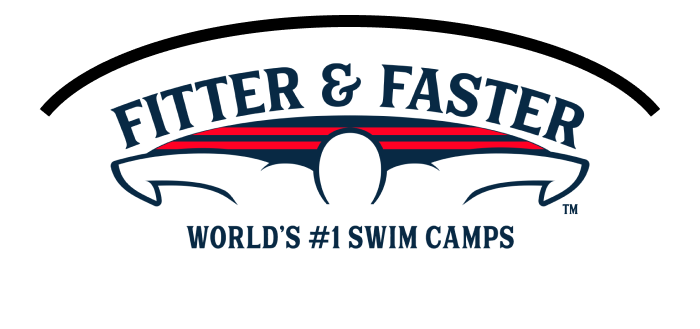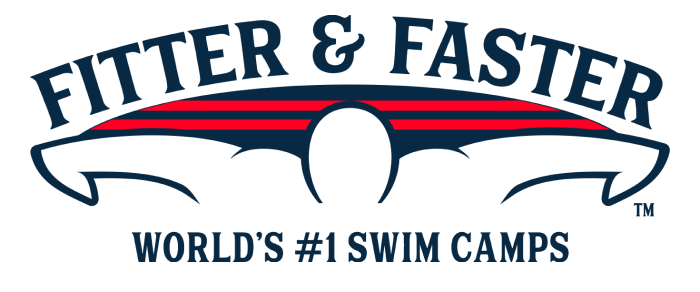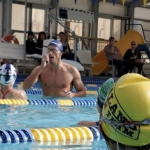Past Clinic: Race Strategy & Execution: 100’s & IM’s (Ages 12 & over)
Buehler YMCA
1400 W Northwest Hwy,
Palatine,
IL 60067
A description of what was covered at this past clinic is below the upcoming clinics.
Upcoming Swim Clinics and Camps
Within 250 miles of Palatine, IL.
Past Clinic
Introduction
Fitter & Faster is returning to the Buehler YMCA in Palatine, IL to produce a 2-day swim camp on December 27 & 28, 2023! This swim camp page is for ages 12 & over. If you are looking for the swim camp page for ages 9 to 11, click here!
Race Strategy & Execution: 100's & IM's (Ages 12 & over)
-> DAY 1 (Wednesday, Dec 27): Fast 100's in ANY stroke
-> DAY 2 (Thursday, Dec 28): Fast IM's
Scroll down for details on the curriculum!
-> Availability in each session is limited to 24 participants to ensure the best learning experience.
-> SAVE when you purchase the “Entire Camp Bundle” for your swimmer.
START TIMES FOR BOTH DAYS: Check in 12:30 PM. Camp: 12:45-3:45 PM
Suggested Participants
Our top priority is to provide a world-class learning experience for all participants at all of our camps. This camp has sessions for swimmers ages 12 & over. Participants will range from one-year of competitive swimming experience to AAAA times and faster. If you are looking for the swim camp page for ages 9 to 11, please click here!
Curriculum
“How should I swim this race?” How many times have you heard this? Swimmers of all ages and abilities have the same question. There are many different ways to swim a fast 100 in every stroke & IM Races. The name of the game is understanding all the different ways to execute the race and seeing what works for you! On Day 1 of this camp the focus will be exclusively on 100’s. On Day 2 the focus will be on the IM's! This swim camp will be led by Elite Clinician: Joao Mescalote!
DAY 1 (Wednesday, Dec 27): FAST 100's
Swimmers at this camp will focus on developing a strong race strategy for 100 yards in any stroke. By learning how to vary components of technique, pacing, and tempo, participants can take their racing to the next level in ANY stroke.
- Strategies: At this camp your swimmer will learn various strategies that elite swimmers have executed with top results. Before your camp you will be emailed links to several elite level races of 100 yards/meters across all strokes. At the camp we will discuss and practice those strategies.
- Easy Speed: Establishing stroke length with the proper tempo after the breakout is essential to setting up a strong 100 in any stroke. Going as fast as we can with ease is the key to “easy speed”. We don’t want to kick or pull too hard on the first 25 in the 100. This will cause early fatigue. Swimmers will work on techniques to swim as fast as they can in all strokes with “easy speed”.
- Control: Your elite clinician will teach participants how to manipulate their speed and energy at different points in a race.
- Front & Back End Speed: The first half (front-end) and second half (back-end) of the 100 can be “broken up” to ensure an effective plan. Some swimmers go out really fast and hang on, while others control the first part of their race, then try to “back-end” the race at full speed. Testing new strategies at this camp will give your swimmer confidence in their next race.
- Underwater Kick Count: Figuring out the optimal number of kicks off each wall is essential to a fast 100. A swimmer wants to spend only the absolute necessary amount of time underwater to establish speed with each length. We want to avoid losing our breath and/or taking weak kicks.
- Breathing Pattern: Establishing a breathing pattern will help the swimmer stay focused and relaxed on their own swim. It will also help them finish the race with enough oxygen to close the race at full speed.
- Establishing a Plan: A racer should have a plan for the race before it is swum! What’s your plan for front-end and back-end speed? How much time will you spend underwater before your first breath? How often will you breath each length?
- Test the Plan in Practice: Now we test it! Swimmers will do a complete short set at the end of the session to practice racing the plan and stroke under race conditions. We’ll get off the blocks and practice some front end swims, push some back end swims, and race some straight 100’s.
- Confidence: One of the essential elements to dropping time and swimming fast is being willing to try new strategies when swimming a race. It’s ok to feel nervous and a little bit uncomfortable before your race! Entering a race with a strategy will help your swimmer with their confidence… and that confidence will help propel them to the results they aim to achieve.
DAY 2 (Thursday, Dec 29): FAST IM's
Fast racing is all in the details. During this session, swimmers will focus on each component of racing fast in the IM! Participants will work with elite clinicians to develop a deeper understanding of high-performance concepts that are important to racing at a high level.
- IM Transitions: The back-to-breast transition has a couple of ways that swimmers can approach it. Our elite clinicians will work with participants to finesse their IM transitions and explore different types of transition turns to have the tools to go from the backstroke to the breaststroke leg the fastest way possible!
- IM Strategies: Go out hard or go out strong? Which IM leg should be pushed harder? Our clinicians will help participants understand different types of pacing and strategies for IM events to race smarter AND faster!
- Stroke Pacing: There are many ways for a swimmer to adjust their strokes to maximize efficiency or speed. Lengthening distance per stroke at critical times in an IM can help conserve energy. Swimmers can also prioritize tempo in their stroke to try to accelerate or finish strong! Elite athletes know themselves and how they need to adjust their strokes. Participants will learn how to seamlessly change these elements within their strokes to maximize the effectiveness of their strategy.
- IM Racing: Many swimmers have different strategies while racing, especially when in the IM’s! Swimmers will need to adjust their racing strategy based on how they stack up among their competitors during the race. Swimmers will work with their elite clinicians on balancing energy expenditure while competing against others to find the ideal combination for IM races!
- Open Turns: Swimmers will work on transitioning all of their speed and momentum from the butterfly leg into their backstroke leg through a snappy, tight open turn. If swimmers go through the motions of an open turn or have bad technique, they can lose valuable time in a race!
- Strategy Reinforcement & Training: Swimmers will work with our clinicians on finessing different IM racing techniques learned during the session. They will also go through a training set developed by our clinicians and the Fitter and Faster coaching team to help swimmers maintain their strategy and technique through fatigue!
ASK QUESTIONS
Swimmers and parents are invited to ask the clinicians questions during a Q&A session. Gain insight into their training regimen, diet and nutrition, and recovery tactics.
WATCH THE CLINICIANS
Observe clinicians swim at full speed and demonstrate a progression of perfectly executed drills to achieve powerful, efficient and fast swimming.
PUT YOUR SKILLS TO THE TEST
Swimmers will get to practice what they've learned by taking their stroke to your top speed with some of the best swimmers and coaches in the world! They'll work on holding onto their form while challenging themselves.
Take a photo, get autographs, and chat with your clinicians!
Inquisitive, Educated Swimmers are Faster Swimmers! Sign up today!
Search all of our clinics...or request a clinic in your area








